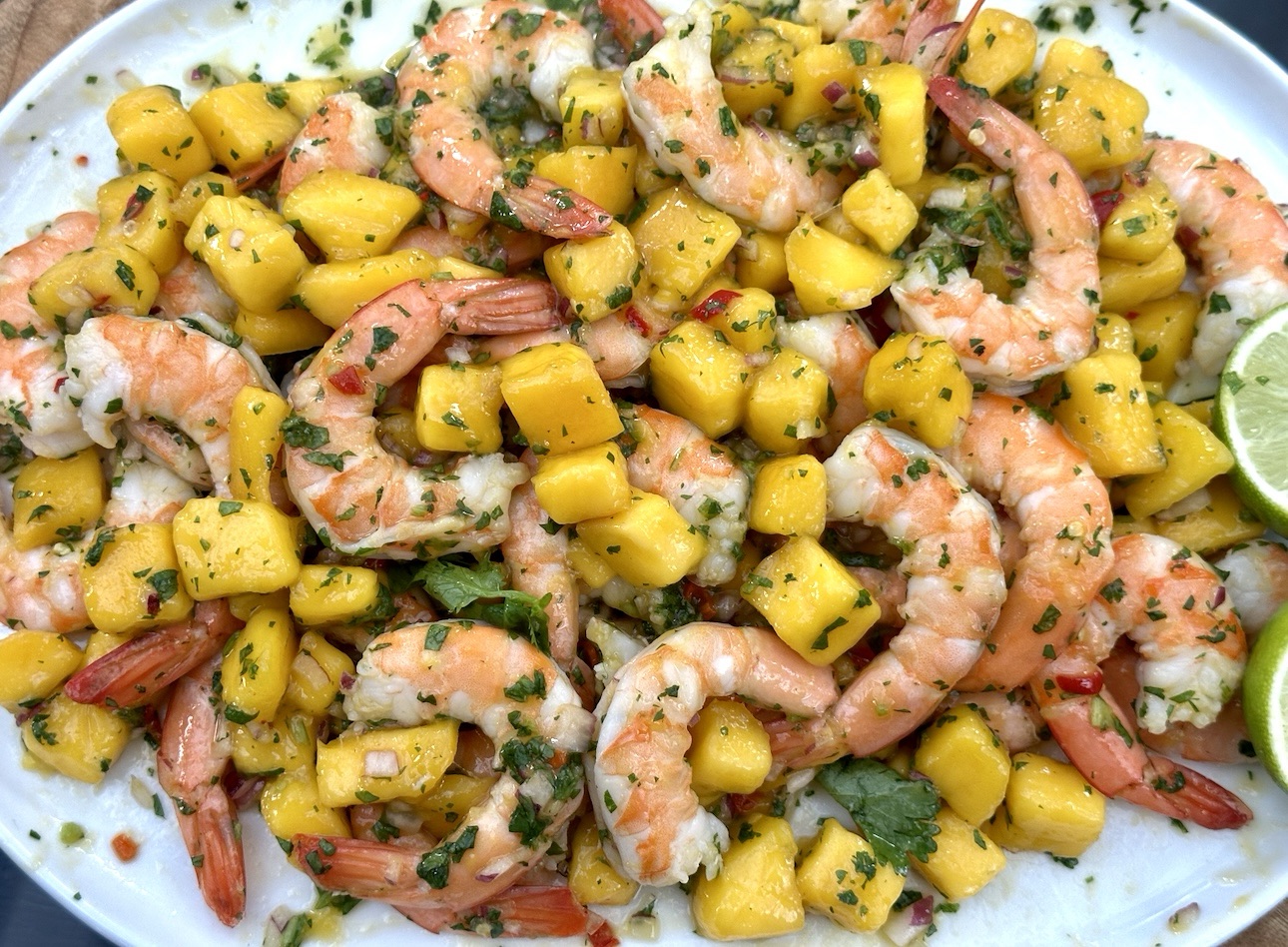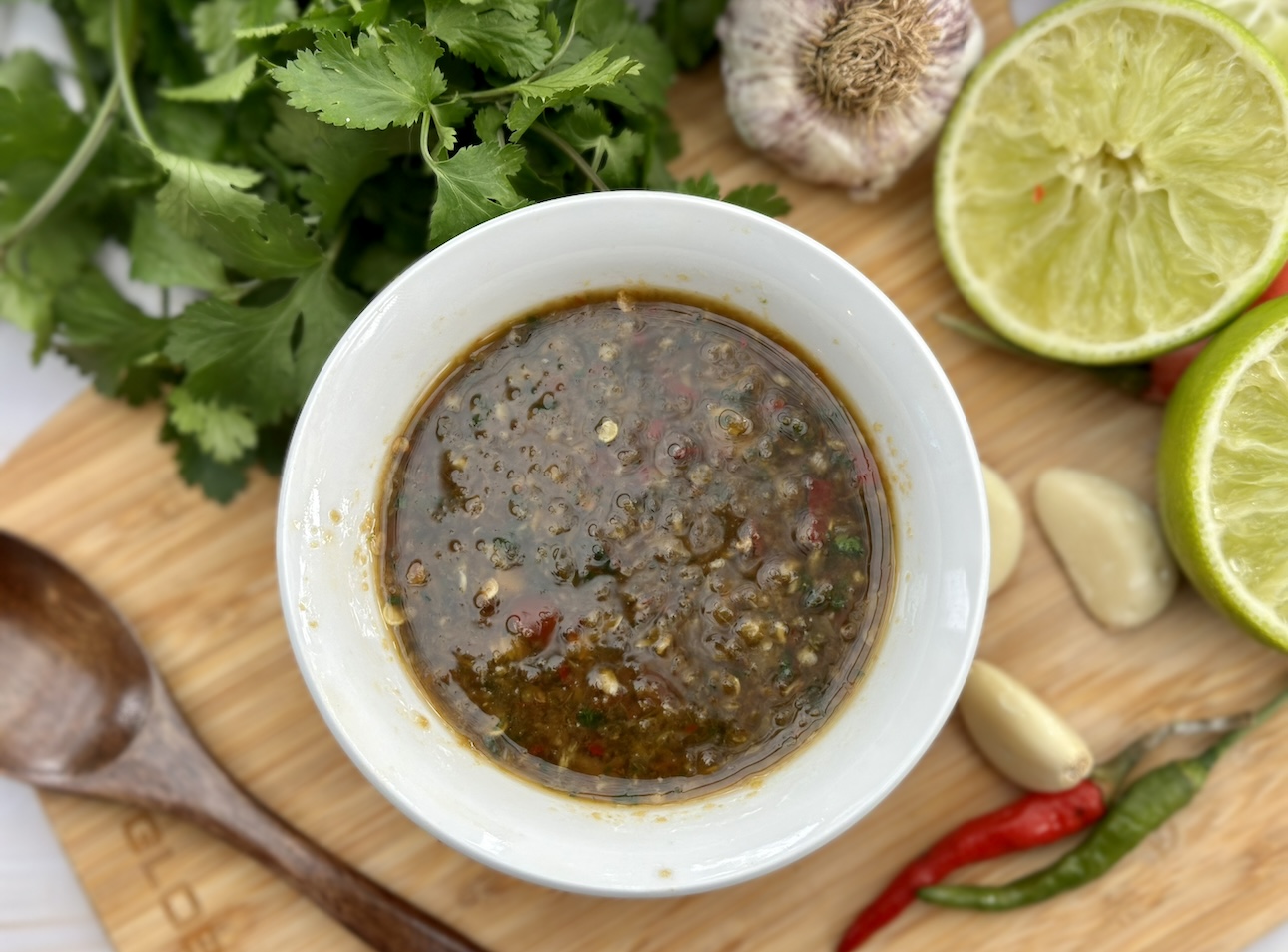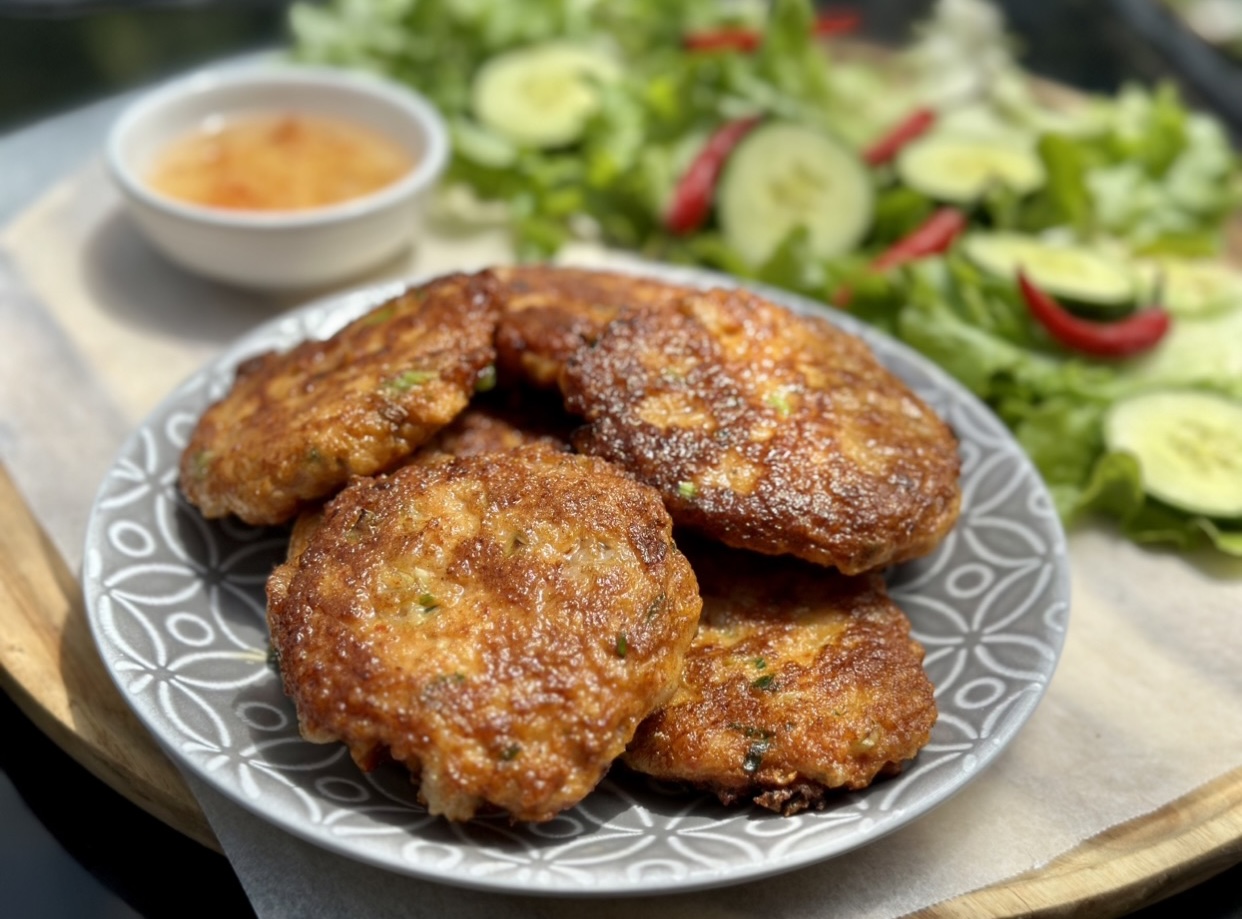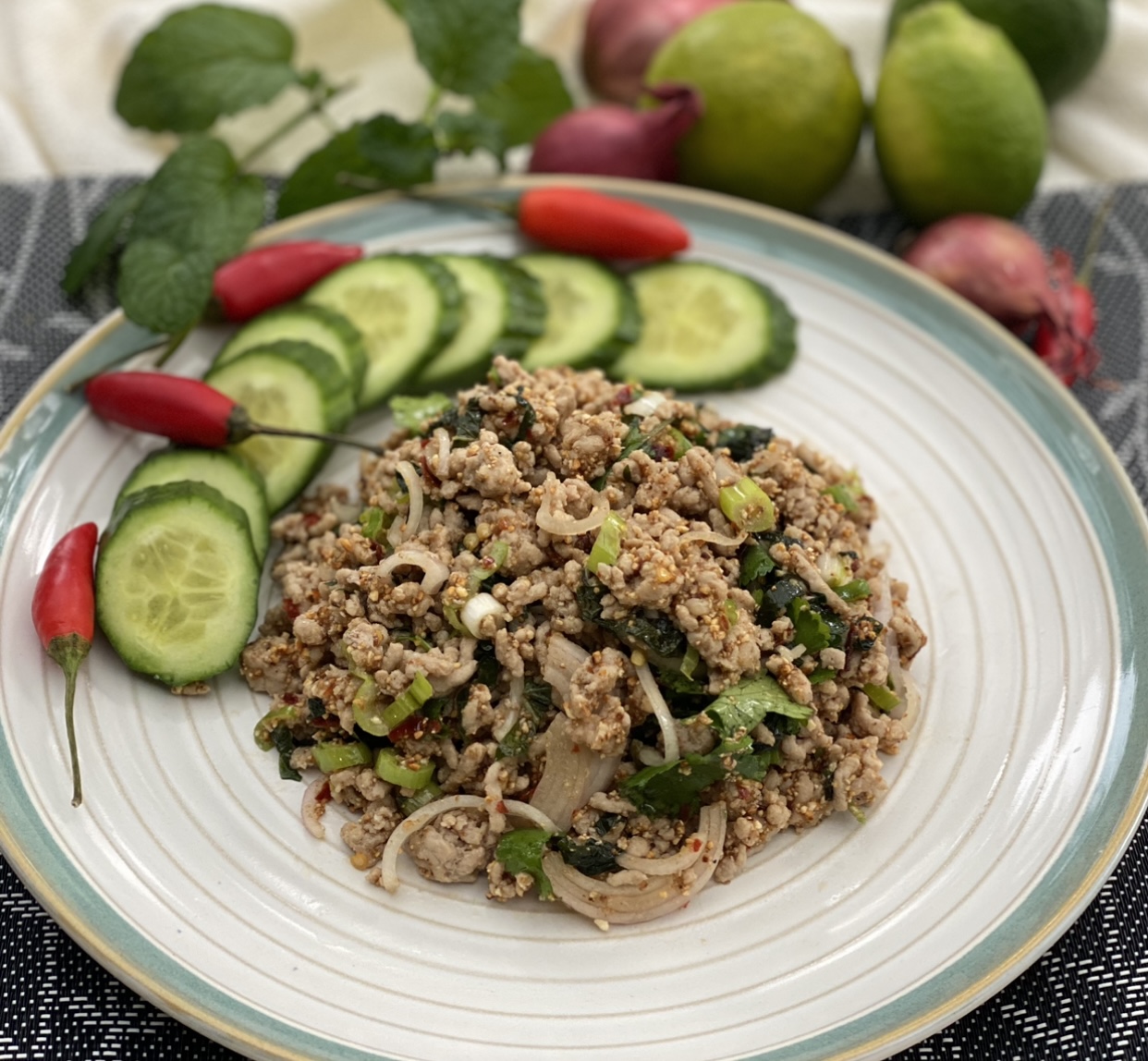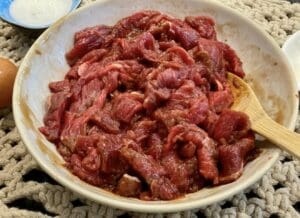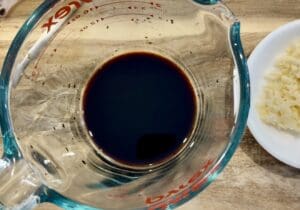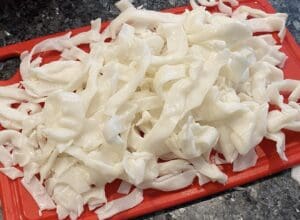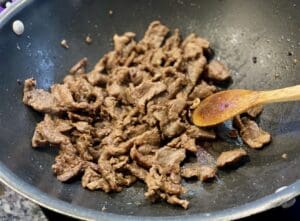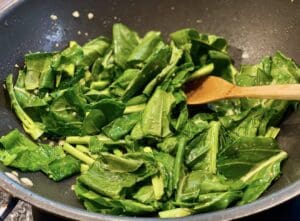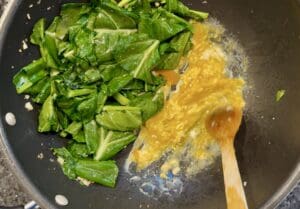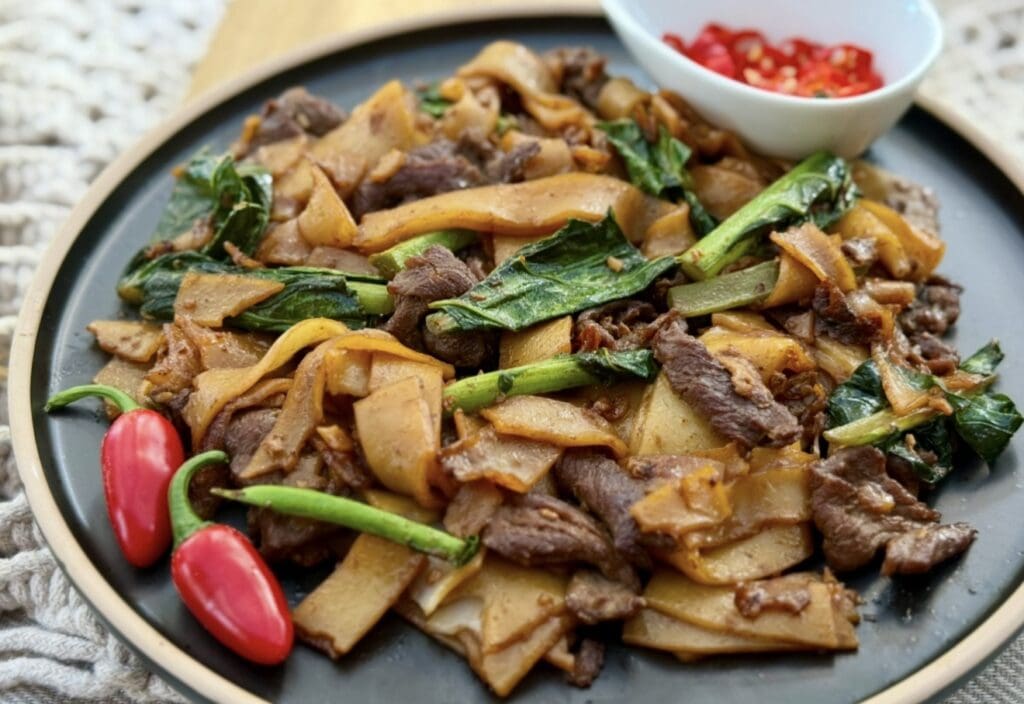
Making Pad See Ew at home is easier than you think. You’ll have delicious, savoury soy noodles to devour in less than 30 minutes!
Noodles Phobia?
It’s tough to admit this as a recipe blogger, but here goes. Working with and cooking noodles scares me a little! Noodles can be challenging, especially when you have to soak them or deal with fresh ones that just want to break into soggy pieces! Yes, I’m looking at you, rice noodles!
Well, not to scare you, but we DO need rice noodles in this recipe 😆 But not to worry because if you have noodle phobia too, let me reassure you, we can get through this. First, close your eyes, then chant these words with me …… haha, just kidding!
What I’m not joking about is how easy and quick it is to make these mouthwatering noodles. Pad see ew in Thai means stir-fried noodles in soy sauce. In Thai restaurants, you can usually pick what protein you want with pad see ew. I’ve seen chicken, beef, pork, duck and seafood. For a vegetarian version, they usually swap meat with fried tofu and vegetables.
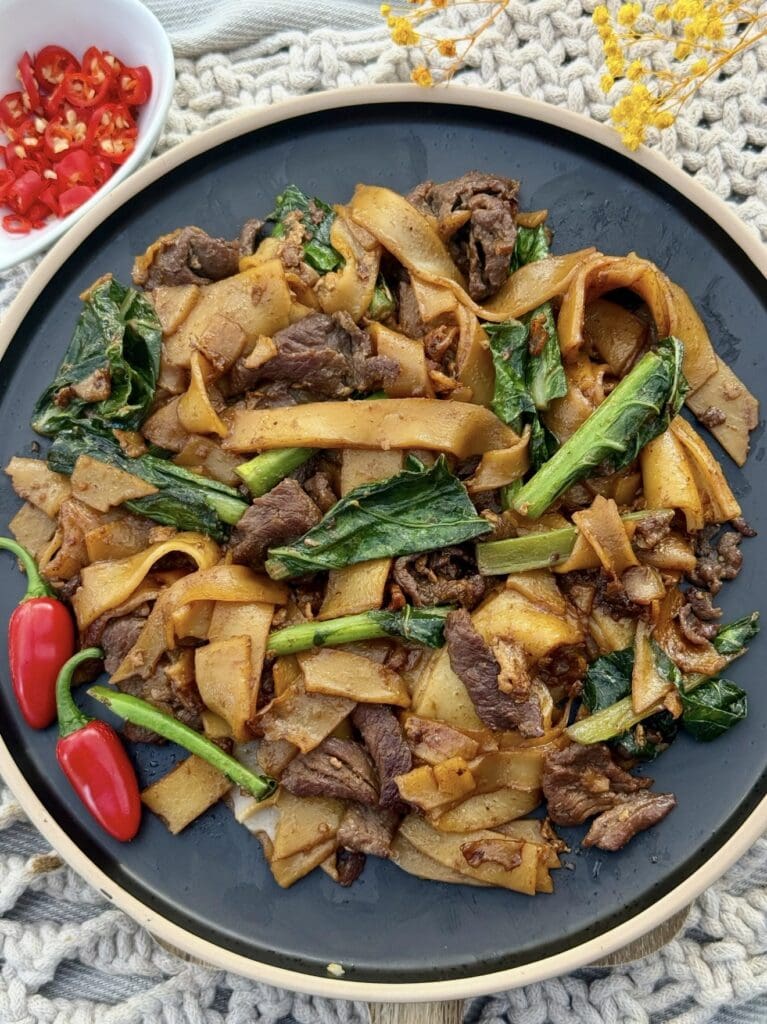
No matter what you choose to have with your Pad see ew, it’ll be equally delicious and so simple to devour! The delightful salty, savoury-sweet soy flavour complements the noodles, meat and vegetables beautifully. It’ll definitely be a big hit with kids and adults alike! I was expecting our 5-year-old to pick the pieces of broccoli and chuck them to the side, but Kai ate them first! OMG proud mother moment.
If you have a majority of Asian sauces at home, then you’re already winning! Grab some meat, veggies and rice noodles, then 30 minutes later, you’ll have piping hot noodles ready to serve. Your family is going to think you’re an international chef superstar and will offer to clean up after. If they do, tell me your secret because mine still doesn’t! 😩
Pad See Ew
How to use fresh rice noodles
Pad See Ew uses Sen Yai noodles, which can be difficult to find. If you have an Asian grocer nearby, fresh wide rice noodles are the way to go! They taste better and easier to work with. They’re usually sold in packets stocked in the fridge area and labelled ‘Pho noodles’ or ‘Banh Pho’. To use fresh noodles, follow the instructions on the packet. Don’t separate cold noodles if they’re stuck together because they’ll break. I usually zap mine in the microwave for 10 to 20 seconds before separating them and they’re ready to use.
Have the noodles ready just before you’re cooking because they’ll likely dry out. Be careful not to overcook them, as they can become mushy. When stir-frying, try tossing the noodles rather than stirring to help stop them from breaking into little pieces.
How to use dry rice noodles?
You could also use dry flat rice ‘Pho’ or ‘Pad Thai’ noodles or sticks for Pad See Ew, but make sure you get a quality brand such as Dragon and Rose. Follow the instructions on how to prepare for cooking. Usually they need to be soaked in hot water until they’ve just softened, around 5-10 minutes. Prepare the noodles just before using them because they’ll clump, go mushy, and break if left for too long, even after draining.
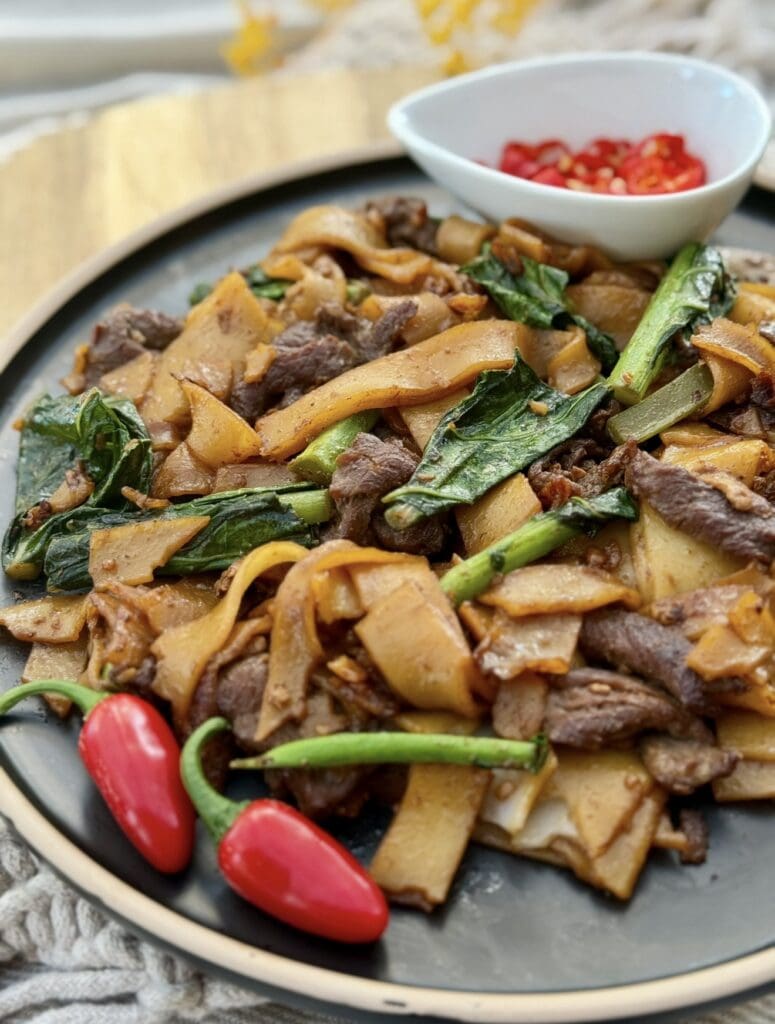
Which protein should I use for Pad See Ew?
The best part of Pad See Ew? You can use whatever protein you have available. Beef, pork, chicken, duck, prawns /shrimp and seafood goes great with the savoury soy noodles. To make this a vegetarian dish, use tofu instead of meat, or add more vegetables like capsicum / bell peppers, baby corn, carrots, and mushrooms.
What does cutting steak against the grain do?
Cutting beef against the grain involves slicing it across the muscle fibers. This technique shortens the muscle fibres, resulting in a more tender and easier-to-chew piece of meat. To identify the grain, look for the lines running along the meat and cut across them rather than parallel to them.
Must try Thai recipes to try at home!
Ingredients for Pad See Ew
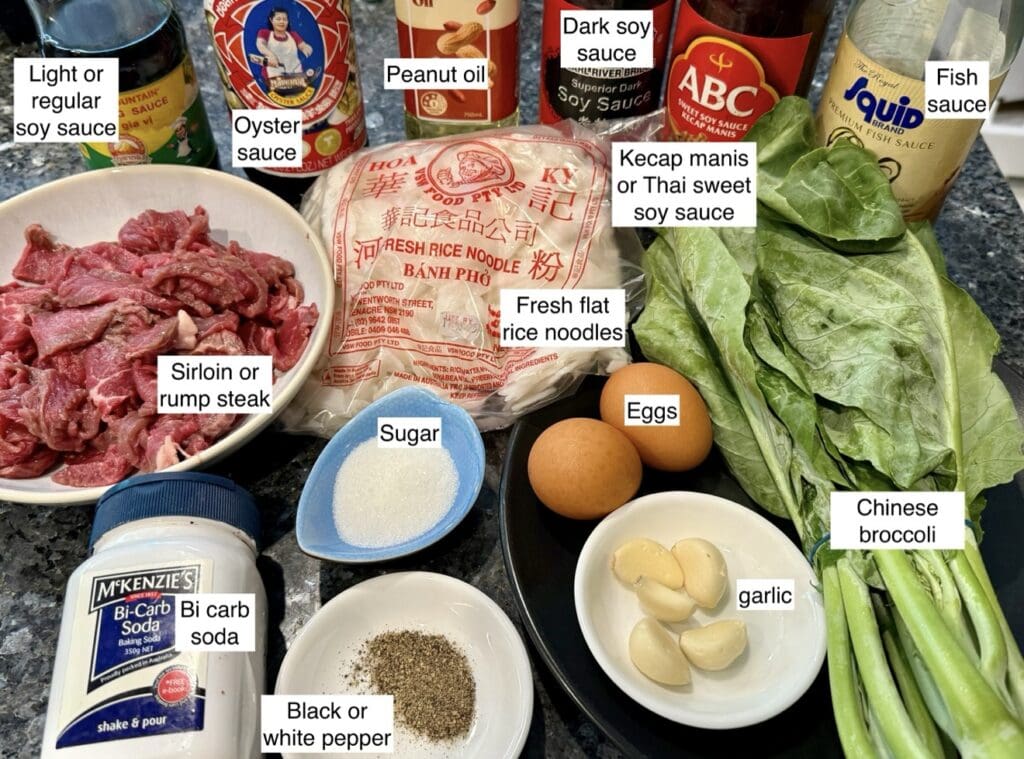
Wide rice noodles – For convenience, I used readily available fresh rice noodles from my local Asian grocer. You can find packets of these noodles in their fridge section.
Chinese broccoli (Gai lan) – You can usually find Chinese broccoli at green grocers and supermarkets, often near the bok choy or other leafy Asian vegetables. Its thick green leaves and stems have a slightly bitter taste, but overall pleasant. You could swap Chinese broccoli with bok choy or broccolini.
Steak – I used rump (or sirloin steak), but you could use any meat you like, such as pork, chicken, duck or seafood. For vegetarian version, so with tofu or just add extra vegetables.
Light or regular soy sauce – Not to be mistaken with the dark or sweet soy sauce varieties, as these aren’t interchangeable.
Oyster sauce – Despite its name, oyster sauce does not have a strong oyster or fishy flavour. Oyster sauce adds a depth of flavour to dishes and has a rich, savoury and with a slightly sweet flavour profile. Find oyster sauce by looking in the international section at a supermarket or visit an Asian grocer.
Baking soda (bi-carb soda) – While uncommon in Thai cooking, I included a bit of baking soda with the marinade to help tenderise the steak. Doing this softens the beef and makes it juicy, but you could just omit the baking soda. There’s no need to rinse the meat before cooking, as you won’t be able to taste it.
Dark soy sauce – The dark soy sauce variety is mainly used to add colour to a dish. It’s less salty, but sweeter and thicker than regular or light soy sauce.
Kecap manis – I swapped Thai sweet soy sauce for kecap manis as it’s similar and more widely available. Kecap manis is a sweet, thick, and syrupy soy sauce with a molasses flavour found in some supermarket and in Asian grocers.
Fish sauce – My favourite brand is ‘Squid’ fish sauce from Thailand, but any brand of fish sauce would work. Despite its strong fish odour, fish sauce imparts a distinctive savoury taste to dishes. You should be able to pick up a bottle at the supermarket or at an Asian grocer.
Subscribe to 3CatsFoodie’s FREE Newsletter

For the latest recipes and other fun stuff!
How to make Pad See Ew
Step-by-step guide with photos
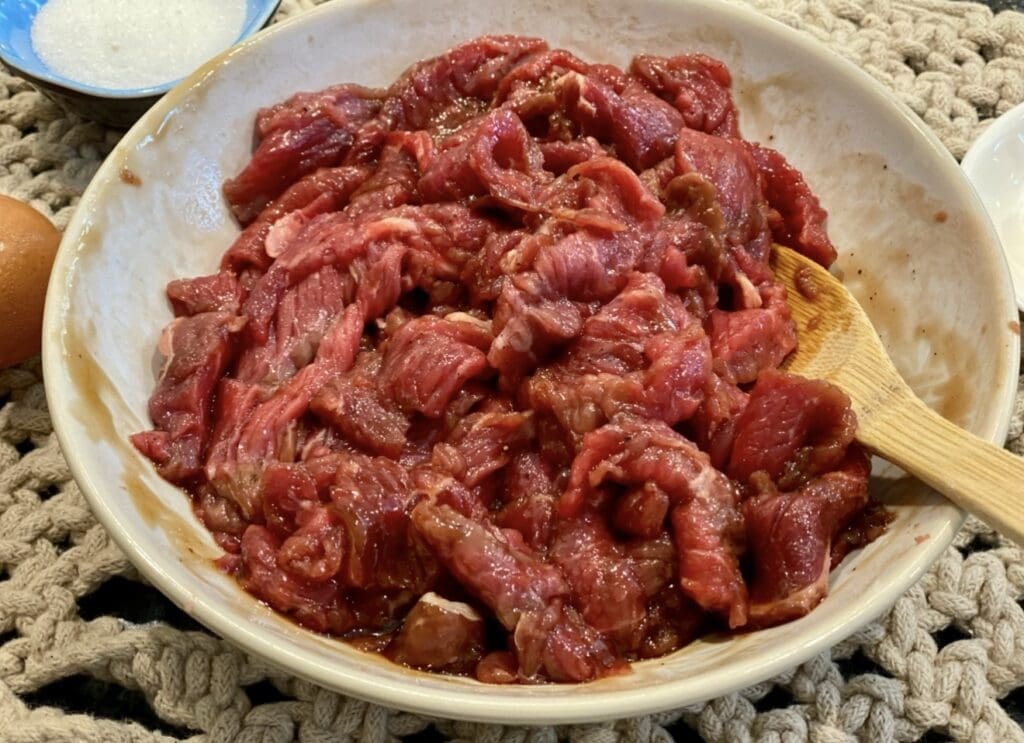
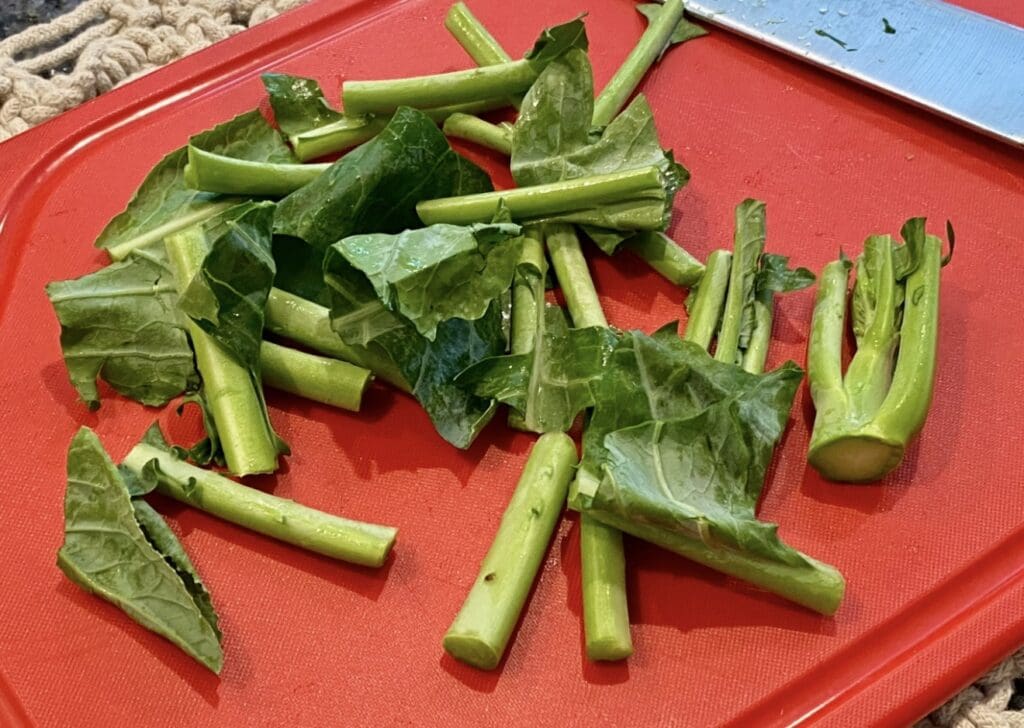
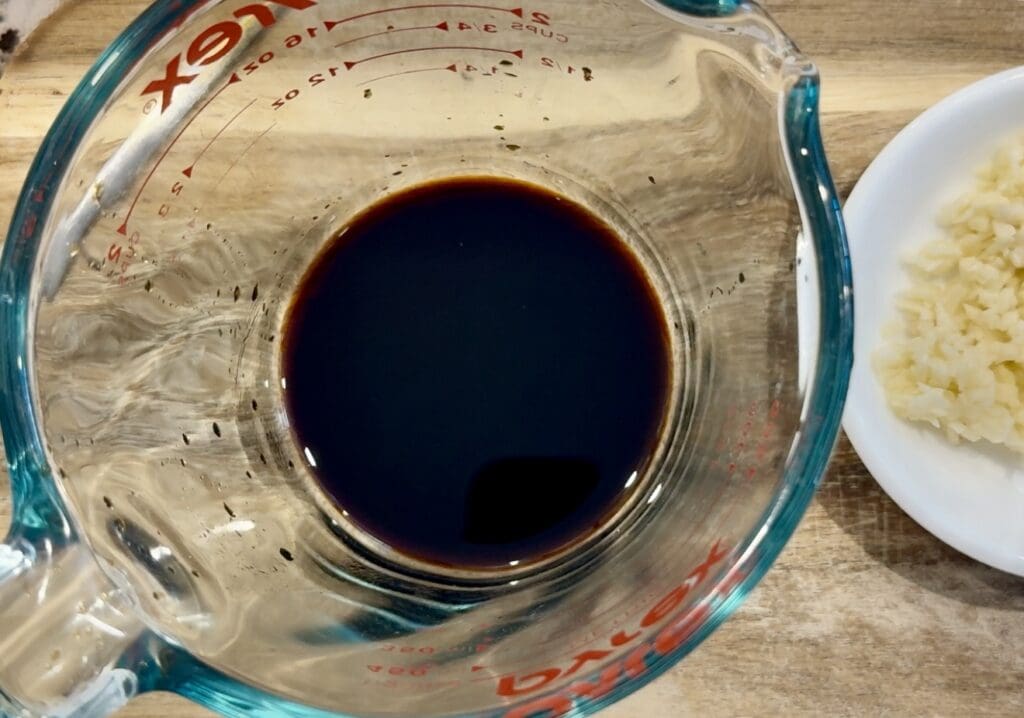
Mix the beef thoroughly with its marinade and let it sit at room temperature while preparing the other ingredients. Wash the Chinese broccoli and chop into 2 inches / 5cm pieces. If the stalks are too thick, cut them lengthwise in half or thirds. In a separate bowl, mix all the sauce ingredients with a whisk or fork and set aside.
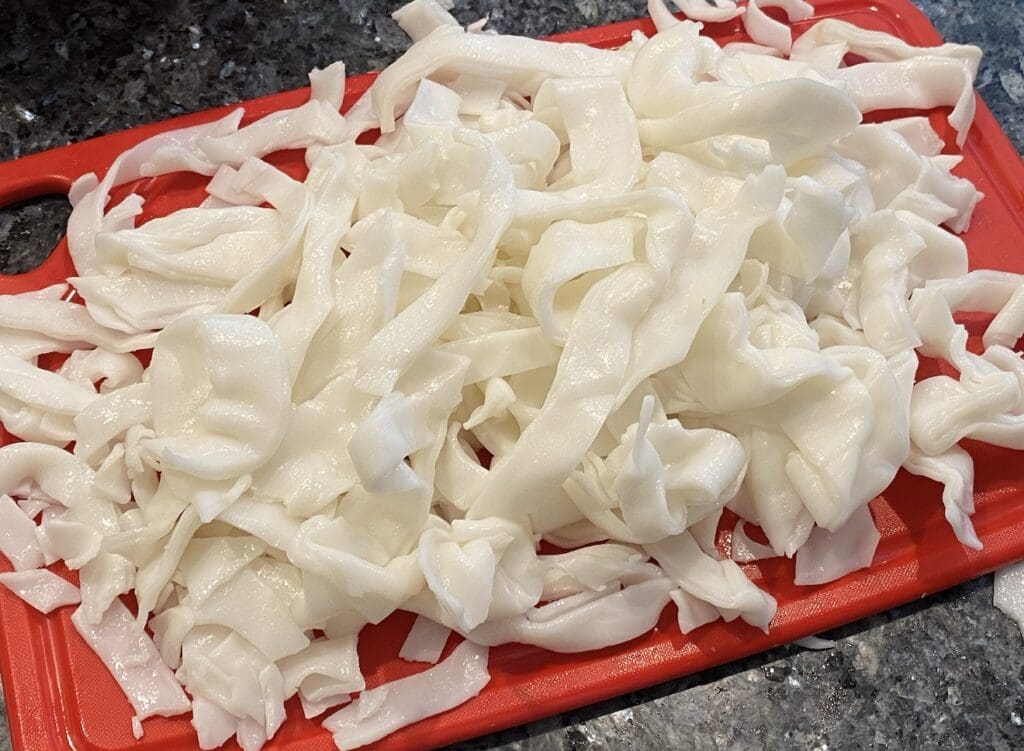
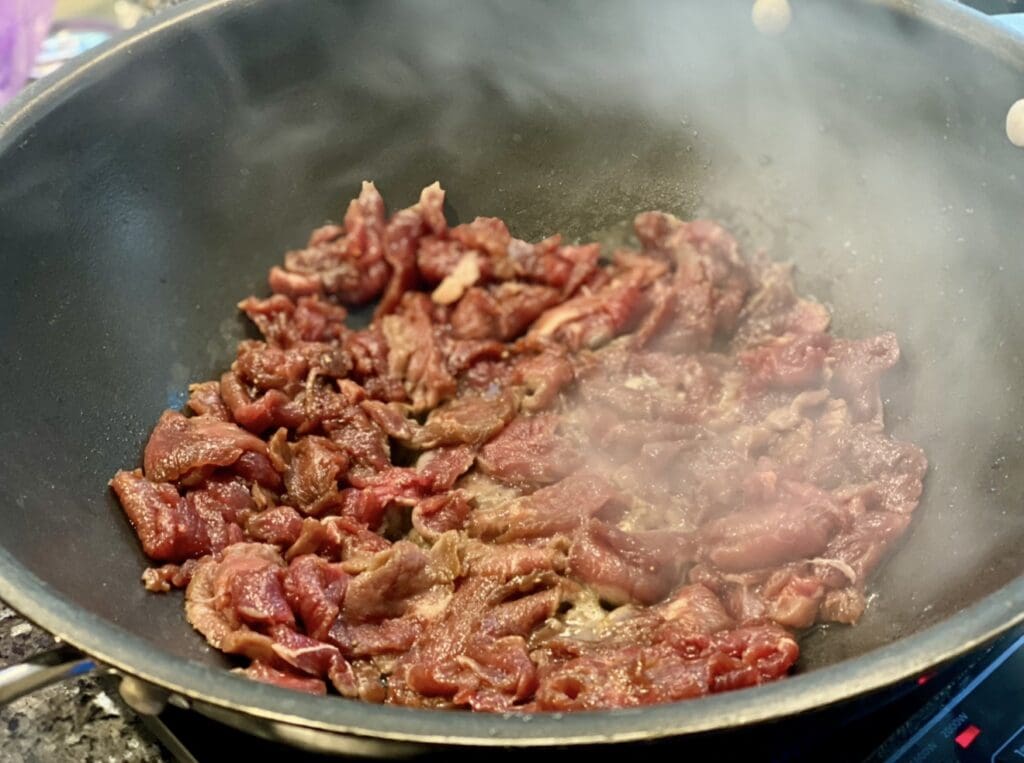
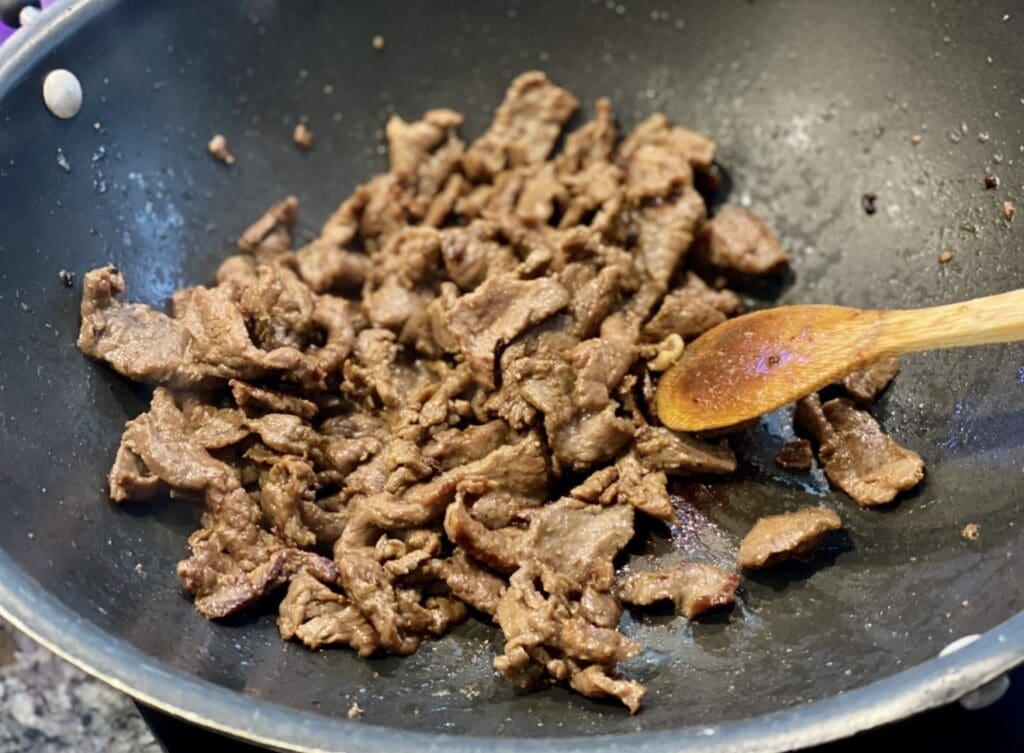
Prepare the noodles by carefully separating them by hand. If they’re too hard, zap them in the microwave for 10 to 20 seconds. Set noodles aside for later.
In a large wok or deep frying pan, heat 2 tbsp of oil over high heat and once the oil starts to smoke, put in the beef. Create a single layer of beef at the bottom of the pan for even frying, then leave it untouched for 2 to 3 minutes before sauteing. Saute the beef until it’s fully cooked, then transfer onto a plate, and set aside.
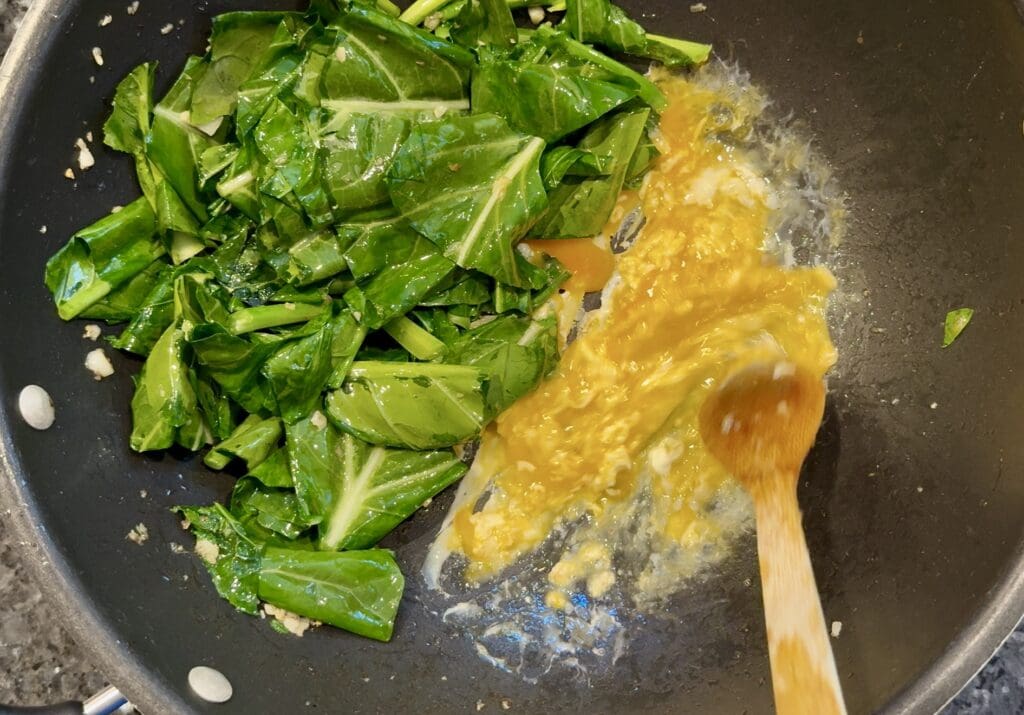
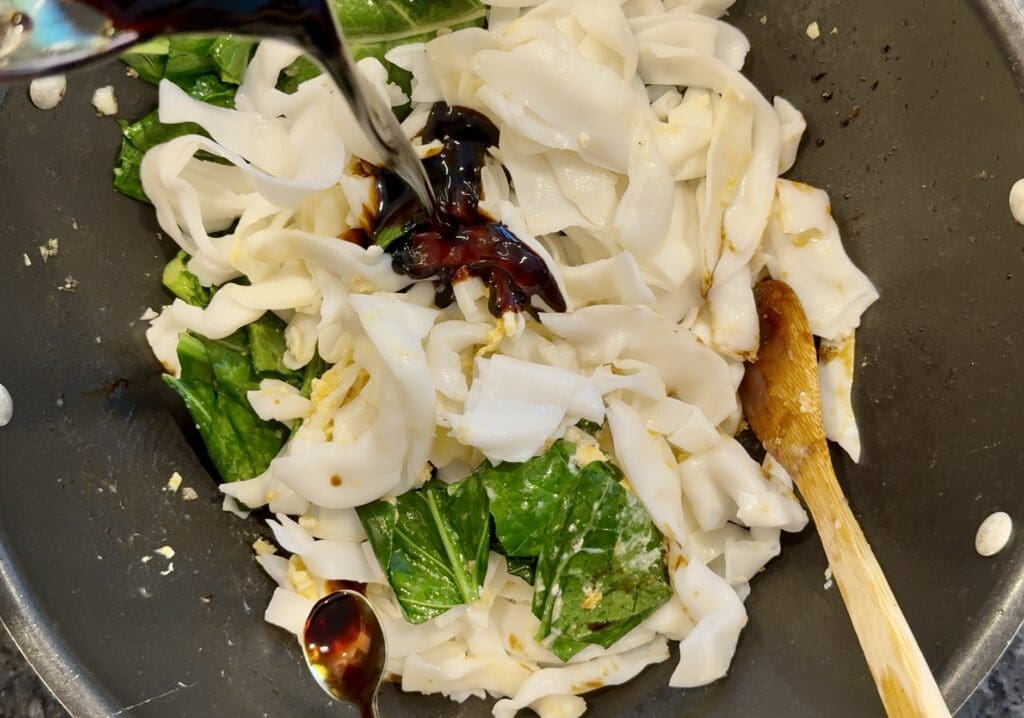
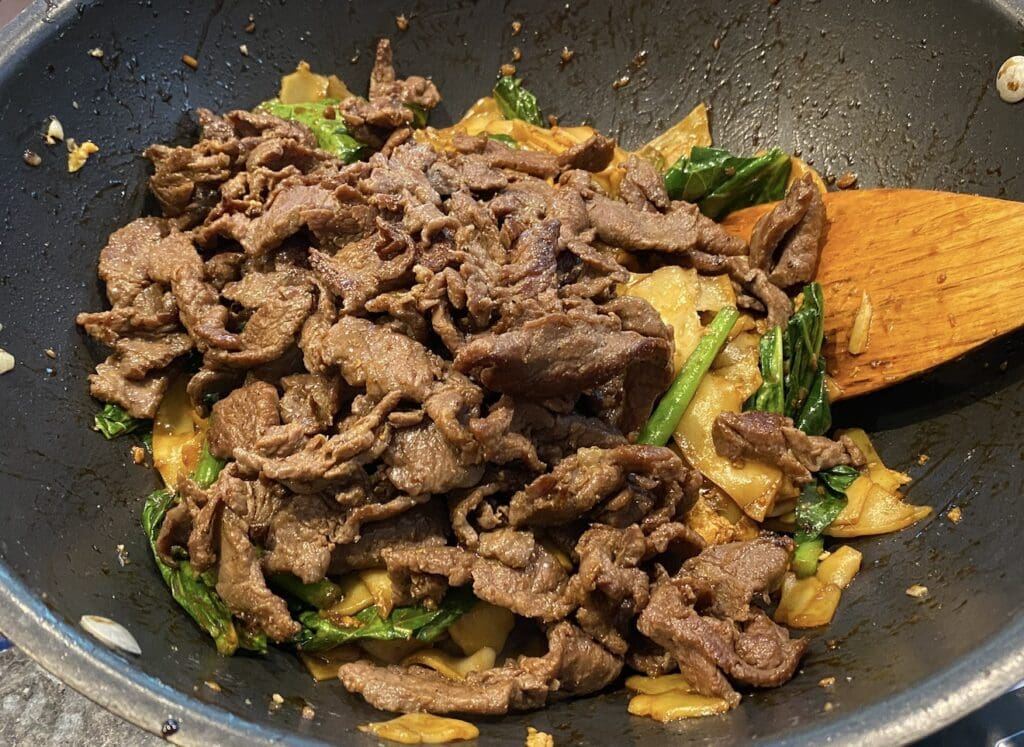
Wipe the same wok clean, then heat over medium high heat with the remaining 2 tbsp of oil. Quickly saute the garlic for about a minute until fragrant, being careful not to burn it. Add in the Chinese broccoli and saute for 2 minutes or until slightly wilted.
Push the broccoli to one side of the wok and add the eggs. Scramble the eggs, and once semi cooked, add in the noodles and sauce. Toss the noodles, taking care not to break them as much as possible. Once the noodles have softened, toss in beef and cook until heated through. For some noodle char, increase heat to high and leave noodles to cook untouched for 1 to 2 minutes. Pad see ew is best served immediately to prevent soggy noodles.
I’ve used a third-party application to calculate the calories and nutritional information, so please use this as an approximate guide only.
Cooking measurements are in Australian standard spoon and cup measurements. For specific details and conversions, visit our Australian Cooking Measurements page.
I would love your feedback and support if you made this recipe. To do this, please rate this recipe and provide a comment by scrolling down this page or by clicking that green circle on the bottom left. An email address is required (for spam), but it won’t be published. I would also love to see your dish, so don’t forget to tag me on my Instagram account ‘3catsfoodie’
Cheers – Cat T
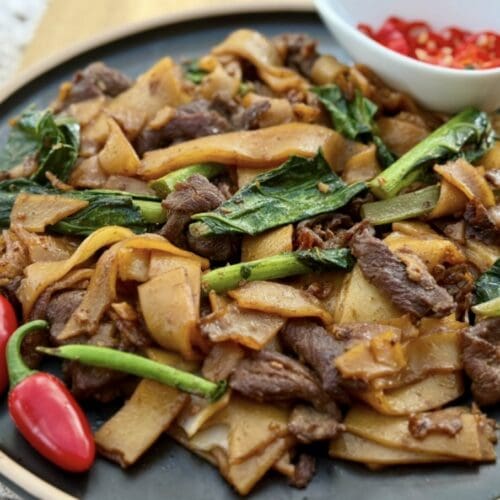
Pad See Ew (Thai soy noodles with beef)
Video
Ingredients
- 1kg / 2.2lbs fresh wide rice noodles (NOTE 1)
- 4 tbsp (80ml / 2.7floz) peanut or vegetable oil
- 4 large garlic cloves (minced)
- 260g / 9oz Chinese broccoli (Gai lan) (NOTE 2)
- 2 large eggs
BEEF AND MARINADE
- 400g / 14oz rump or sirloin steak (fat removed and sliced thinly against the grain) (NOTE 3)
- 2 tsp light or regular soy sauce (NOTE 4)
- 2 tsp oyster sauce (NOTE 5)
- ½ tsp baking soda (bi-carb soda) (NOTE 6)
- ¼ tsp freshly ground black or white pepper
SAUCE
- 2 tbsp (40ml / 1.4floz) light or regular soy sauce
- 2 tbsp (40ml / 1.4floz) oyster sauce
- 1 tbsp (20ml / 0.7floz) dark soy sauce (NOTE 7)
- 1 tbsp (20ml / 0.7floz) kecap manis or Thai sweet soy sauce (NOTE 8)
- 2 tsp fish sauce (NOTE 9)
- 1 tbsp (20g / 0.7oz) white sugar
Instructions
- Mix the beef thoroughly with its marinade and let it sit at room temperature while preparing the other ingredients. Wash the Chinese broccoli and chop into 2 inches / 5cm pieces. If the stalks are too thick, cut them lengthwise in half or thirds

- In a separate bowl, mix all the sauce ingredients with a whisk or fork and set aside.

- Prepare the noodles by carefully separating them by hand. If they're too hard, zap them in the microwave for 10 to 20 seconds. Set noodles aside for later.

- In a large wok or deep frying pan, heat 2 tbsp of oil over high heat and once the oil starts to smoke, put in the beef. Create a single layer of beef at the bottom of the pan for even frying, then leave it untouched for 2 to 3 minutes before sauteing. Saute the beef until it's fully cooked, then transfer onto a plate, and set aside.

- Wipe the same wok clean, then heat over medium high heat with the remaining 2 tbsp of oil. Quickly saute the garlic for about a minute until fragrant, being careful not to burn it. Add in the Chinese broccoli and saute for 2 minutes or until slightly wilted.

- Push the broccoli to one side of the wok and add the eggs. Scramble the eggs, and once semi cooked, add in the noodles and sauce. Toss the noodles, taking care not to break them as much as possible. Once the noodles have softened, toss in beef and cook until heated through. For some noodle char, increase heat to high and leave noodles to cook untouched for 1 to 2 minutes. Pad see ew is best served immediately to prevent soggy noodles.


